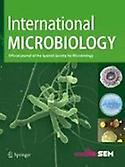Angeles Aguilera-Bazán, of the Astrobiology Center (INTA-CSIC), has talked about microorganisms in the atmosphere. The interest of the Astrobiology Center is to analyze how microorganisms resist space travel, and if they are capable of surviving and colonizing other planets.
Microorganisms are present in all places in the biosphere. These habitats include media such as soil, water, animals or plants, as well as virtually any man-made structure. In this sense, the atmosphere is not very different from other environments, the presence of water and microorganisms having been demonstrated in it for decades. The aerobiology As a discipline, it emerged around 1930 and is responsible for studying the transport of microorganisms, their characterization and identification, as well as their behavior, movement and survival in the atmosphere. It is a multidisciplinary field where knowledge of microbiology, meteorology, physics and chemistry of the atmosphere is combined.
One of the questions we have asked ourselves frequently is Where do atmospheric microorganisms come from? We know that microorganisms are not capable of escaping the Earth's atmosphere. It does not come, therefore, from space, but rather from the Earth's surface: from aerosols that form in tropical forests, from the sea surface due to the wind, from desert storms with dust particles, or from urban and industrial emissions. or livestock. These aerosols put microorganisms in suspension in the atmosphere. Its effect is also planetary.
Microorganisms are usually more numerous in the layers closest to the ground, the troposphere (up to 20 km), where concentrations between 1,000 and 10,000 microorganisms/mL can be found. But microorganisms have also been detected at high altitudes, in the stratosphere (up to 50 km) and even in the mesosphere (up to 90 km) where the presence of some fungi has been detected.
The atmosphere, Is it a true ecosystem? The majority thinks no, it is not a true ecosystem, the microorganisms are transported. A wide variety of microorganisms change their geographic location through the atmosphere. Their number and viability change with the time of day, weather conditions, seasons of the year or geographic location.
At the Astrobiology Center they have developed different methodology for microbiological sampling in atmospheric balloons and airplanes. They have analyzed the impact of Saharan dust storms on the distribution of microorganisms, analyzing the microbial composition at various altitudes using metagenomics techniques.
Summary prepared by Ignacio López-Goñi from the University of Navarra.





No comment yet, add your voice below!